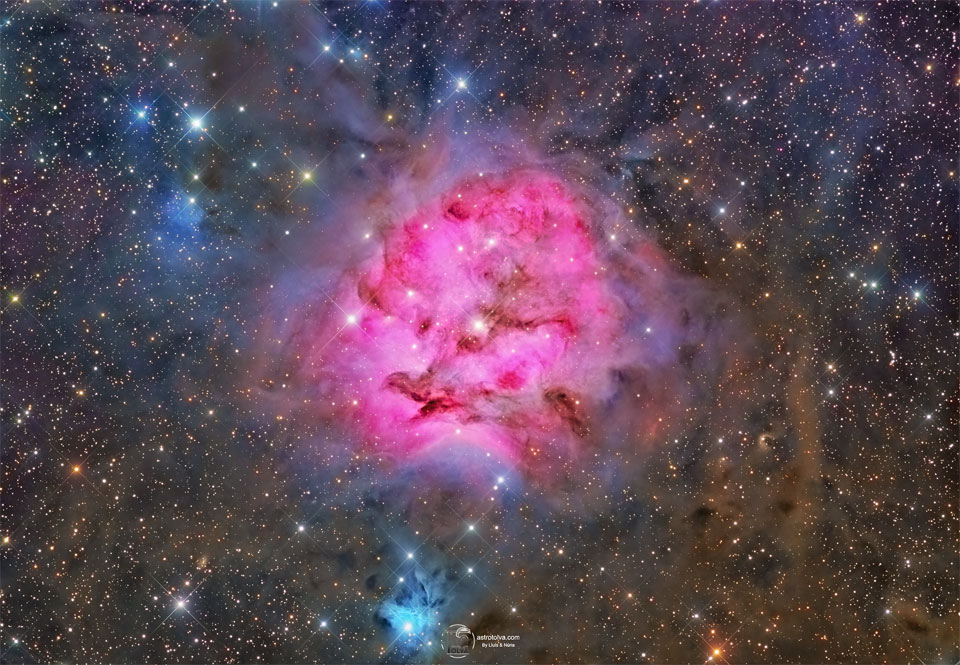My gut reaction when I first saw this APOD, before my conscious thoughts and intellectual judgement had caught up with my extremely deep-seated emotional reaction to aesthetics, was,
Wow, that's a lovely portrait of the Trifid Nebula!
But of course the APOD is not the Trifid Nebula but the Cocoon Nebula!

What a wonderful shade of magenta it is, too!

APOD Robot wrote:
Like other star forming regions, it stands out in red, glowing, hydrogen gas excited by young, hot stars, and dust-reflected starlight at the edge of an otherwise invisible molecular cloud.
That's not correct! The Cocoon nebula is not ionized by young hot stars but by
one young hot star,
BD+46 3474, of spectral class B1V! This means that the Cocoon Nebula glows red even though it it not being ionized by even a single O-type star, and not even a single star of spectral class B0, but by a star of spectral class B1V and a number of smaller stars surrounding it (thanks, Jac, for the great picture you provided!).
If we compare the Cocoon Nebula with the Trifid Nebula, we can see that the Trifid Nebula is powered by a star of spectral class O7.5V. That means that the Trifid Nebula central star, HD 164492, is almost certainly producing several times more ultraviolet (let alone far ultraviolet) photons than the central star of the Cocoon nebula. We therefore have good reasons to believe that the Trifid Nebula is bigger (and probably brighter) than the Cocoon Nebula.
Wikipedia has provided an interesting list of typical properties of stars of spectral class B. According to this list, a star of spectral class B1V has a typical mass of 11 solar masses and a typical temperature of 26,000 K. But according to
another Wikipedia entry, BD+46 3474 has an estimated mass of 14±4 solar masses, so it might be a bit more massive than what is "typical". Oh well.
(By contrast, a star of spectral class O7.5V may be at least 25 solar masses, and its temperature may be close to 40,000 K.)
Anyway, my point is this: I don't know of any other emission nebula with an NGC or IC designation that is powered just by a single star of spectral class B1!
All right, some ionization is also provided by the hue and cry of large numbers of angry little star babies in the process of being born around their big sibling BD+46 3474.
Oh, and by the way: That blue little nebula near bottom of the APOD is probably vdB 147 (in which case north is not up in the APOD):
The reason I wanted to call your attention to vdB 147 is that we do have access to the Gaia parallax of the central star of this nebula,
BD+46 3471, and the Gaia parallax puts this star and its nebula at a distance of some 2,500 light-years. By contrast, there exists no Gaia parallax for the central star of the Cocoon Nebula. But if we assume that the Cocoon Nebula and the small reflection nebula vdB 147 are at similar distances from us - they do look like they could be connected - then the Cocoon Nebula is a lot closer to us than 4,000 light-years.
But of course it is possible that vdB 147 is a foreground object.
Ann
 IC 5146: The Cocoon Nebula
IC 5146: The Cocoon Nebula










